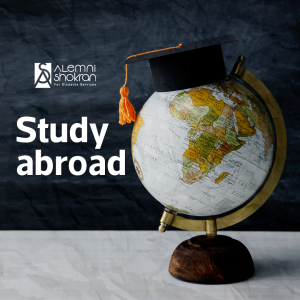

Specialties

Aerospace engineering is a discipline that focuses on the study of aircraft design, development, operation, and maintenance.

Aerospace Engineering major in Malaysia
Aerospace engineering is a discipline that focuses on the study of aircraft design, development, operation, and maintenance.
Students in this field study aerodynamics, mechanical design, electrical and electronics, and control systems.
History of Aerospace Engineering major in Malaysia
Aerospace engineering major in Malaysia began in 1965 with the opening of the Bachelor of Aerospace Engineering program at Universiti Putra Malaysia (UPM).
This program was the first of its kind in Malaysia and aimed to prepare engineers to work in the growing aviation industry in the country.
Today, many Malaysian universities offer aerospace engineering programs, including both government and private universities. Here are some notable events in the history of aerospace engineering major in Malaysia:
-1965: Opening of the Bachelor of Aerospace Engineering program at Universiti Putra Malaysia.
-1975: Opening of the Bachelor of Aerospace Engineering program at Universiti Sains Malaysia.
– 1986: Opening of the Bachelor of Aerospace Engineering program at Universiti Tun Hussein Onn Malaysia.
– 2000: Opening of the Bachelor of Aerospace Engineering program at Universiti Kuala Lumpur.
Number of Aerospace Engineering Students in Malaysia
According to data from the Malaysian Examinations Council, the number of students studying aerospace engineering in Malaysia was approximately 2000 in 2022. These students are distributed as follows:
– Universiti Putra Malaysia: 600 students.
– Universiti Sains Malaysia: 400 students.
– Universiti Tun Hussein Onn Malaysia: 400 students.
– Universiti Kuala Lumpur: 600 students.
It is expected that the number of students studying aerospace engineering in Malaysia will continue to grow in the coming years as the aviation industry in the country expands rapidly.
Benefits of Studying Aerospace Engineering in Malaysia
Studying aerospace engineering in Malaysia offers several benefits, including:
– High-quality academic programs: Malaysian universities are committed to offering high-quality aerospace engineering programs that meet international standards.
– Affordable tuition fees: Malaysia offers lower tuition fees compared to other countries, making it an attractive option for international students.
– Rapid growth of the aviation industry: Malaysia’s aviation industry is growing rapidly, leading to increased demand for qualified engineers in the field.
– Cultural diversity: Malaysia is known for its cultural diversity, providing international students with the opportunity to experience different cultures.
– Variety of academic, cultural, and social programs: Malaysian universities offer a variety of academic, cultural, and social programs to help international students integrate into Malaysian society and learn about its culture.
Is Studying Aerospace Engineering in Malaysia Affordable?
Yes, studying aerospace engineering in Malaysia is considered affordable compared to other countries.
Tuition fees at Malaysian public universities are lower than those at private universities. Additionally, there are many scholarships available for international students studying in Malaysia.
If you would like to learn more about studying aerospace engineering in Malaysia, feel free to contact us.
We provide educational consulting services to help you choose the right university, obtain a study visa, and prepare for studying in Malaysia.
Requirements for Studying Aerospace Engineering in Malaysia
Admission requirements for aerospace engineering programs in Malaysia vary from university to university.
However, generally, Malaysian universities require the following for admission to a Bachelor of Aerospace Engineering program:
– General Certificate of Education or its equivalent, with a cumulative average of at least 75% in science subjects, including mathematics, physics, and chemistry.
– English language proficiency certificate, such as IELTS or TOEFL, with a score of at least 5.5 or 72 respectively.
Some Malaysian universities may require a personal interview or additional tests, such as academic aptitude tests or engineering aptitude tests.
In general, students interested in studying aerospace engineering in Malaysia should ensure they meet all admission requirements before submitting their applications.
Requirements for Studying Aerospace Engineering in Malaysia (Master’s Level)
Admission requirements for aerospace engineering programs at the master’s level in Malaysia vary from university to university.
However, generally, Malaysian universities require the following for admission to a Master of Aerospace Engineering program:
– Bachelor’s degree in aerospace engineering, with a cumulative average of at least 75%.
– English language proficiency certificate, such as IELTS or TOEFL, with a score of at least 6.0 or 80 respectively.
– Personal interview: Some Malaysian universities may require a personal interview for applicants to the Master of Aerospace Engineering program.
– Additional tests: Some Malaysian universities may require additional tests, such as academic aptitude tests or engineering aptitude tests.
Requirements for Pursuing a Ph.D. in Aerospace Engineering in Malaysia
Requirements for admission to aerospace engineering programs in Malaysia vary from university to university, but generally Malaysian universities stipulate the following for admission to a Ph.D. program in aerospace engineering:
– A Master’s degree in aerospace engineering, with a cumulative GPA of no less than 75%.
– Proficiency in English language, demonstrated through exams such as IELTS or TOEFL, with a score of no less than 6.5 or 85 respectively.
– Letters of recommendation from two or more professors.
– Curriculum Vitae (CV): Applicants for the Ph.D. program must submit a CV outlining their academic and research experiences.
– Research proposal: Ph.D. applicants must submit a research proposal outlining their research objectives and how they plan to achieve them.
– Some Malaysian universities may require a personal interview for applicants to the Ph.D. program in aerospace engineering.
– Some Malaysian universities may also require additional tests, such as academic aptitude tests or engineering aptitude tests.
Duration of Aerospace Engineering Bachelor’s Degree Studies in Malaysian Universities
The duration of a Bachelor’s degree in aerospace engineering in Malaysian universities is 4 years, divided into 8 semesters.
Bachelor’s Degree Aerospace Engineering Courses
– Advanced Mathematics: Covers a wide range of advanced mathematical topics such as calculus, matrix algebra, number theory, and numerical analysis.
– Advanced Physics: Includes a broad range of advanced physics topics such as fluid mechanics, thermal dynamics, electricity, electronics, and optics.
– General Chemistry: Covers the basic principles of chemistry such as atomic structure, molecular composition, and chemical reactions.
– Introduction to Aerospace Engineering: Provides an overview of aerospace engineering, covering topics such as the history of aerospace engineering, principles of aerodynamics, aircraft design, and control systems.
– Basic Aerodynamics: Covers the fundamental principles of aerodynamics, such as fluid theory, aerodynamic forces, and aircraft characteristics.
– Basic Mechanical Design: Covers the fundamental principles of mechanical design, such as materials mechanics, force analysis, and mechanical system design.
– Basic Electrical and Electronics: Covers the basic principles of electricity and electronics, such as electric circuits, electronic components, and electronic control systems.
– Basic Control Systems: Covers the basic principles of control systems, such as control theory and control system design.
– Advanced Aerodynamics: Covers advanced topics in aerodynamics, such as nonlinear aerodynamics, thermal aerodynamics, and aircraft dynamics.
– Advanced Mechanical Design: Covers advanced topics in mechanical design, such as structural design, thermal dynamic analysis, and aircraft mechanical design.
– Advanced Electrical and Electronics: Covers advanced topics in electricity and electronics, such as digital electronics, analog electronics, and advanced control systems.
– Advanced Control Systems: Covers advanced topics in control systems, such as nonlinear control theory and nonlinear control system design.
– Graduation Project: Requires students to complete an independent research project in the field of aerospace engineering.
Duration of Aerospace Engineering Master’s Degree Studies in Malaysian Universities
The duration of a Master’s degree in aerospace engineering in Malaysian universities is 2 years, divided into 4 semesters.
Master’s Degree Aerospace Engineering Courses
The core courses in aerospace engineering focus on providing students with the knowledge and skills necessary to work in the aerospace engineering field, and include:
– Aerodynamics: Studies the movement of air around objects, covering basic aerodynamics such as air properties, motion laws, and external force effects on objects. Advanced aerodynamics focuses on more advanced topics such as unstable aerodynamics, turbulent aircraft dynamics, and multi-body aircraft dynamics.
– Aircraft Dynamics: Studies the motion of aircraft in space, covering basic aircraft dynamics such as motion laws, external force effects on aircraft, and aircraft design. Advanced aircraft dynamics focus on more advanced topics such as stability and control of aircraft, unstable aircraft dynamics, and turbulent aircraft dynamics.
– Aircraft Design: Involves the process of designing and building aircraft, covering basic aircraft design such as aircraft properties, force analysis, structure design, and system design. Advanced aircraft design focuses on more advanced topics such as high-speed aircraft design, variable-wing aircraft design, and unmanned aircraft design.
– Aircraft Systems: Consists of a set of systems that work together to operate the aircraft, covering basic aircraft systems such as control systems, power systems, guidance systems, and safety systems.
Advanced aircraft systems focus on more advanced topics such as smart control systems, renewable energy systems, and advanced guidance systems.
– Control Engineering: Studies how to control dynamic systems, covering basic control engineering such as control theory, control system design, and system stability analysis. Advanced control engineering focuses on more advanced topics such as nonlinear control systems, integrated control systems, and smart control systems.
– Commercial Aircraft Design: Focuses on designing and building commercial aircraft, covering topics such as wing design, structure design, engine design, control system design, and safety design.
– Military Aircraft Design: Focuses on designing and building military aircraft, covering topics such as fighter aircraft design, unmanned aircraft design, missile design, and weapons systems design.
– Rocket Design: Focuses on designing and building rockets, covering topics such as ballistic missiles, guided missiles, stable rockets, and unstable rockets.
– Space Engineering: Focuses on designing and building space vehicles, covering topics such as satellite design, manned spacecraft design, space navigation systems, and space control systems.
– Research Project: Focuses on implementing a research project in a specific area of aerospace engineering, and includes selecting a project topic, designing the project, implementing the project, and writing a project report.
Duration of Aerospace Engineering Ph.D. Studies in Malaysian Universities
Learn about the duration and coursework of Aerospace Engineering Ph.D. programs in Malaysian universities, as well as job opportunities for graduates in the aviation industry.
Duration of Aerospace Engineering Ph.D. Studies in Malaysian Universities
The duration of a Ph.D. program in Aerospace Engineering in Malaysian universities is typically three years.
However, some universities may allow students to complete the program within two or four years.
Coursework for Aerospace Engineering Ph.D. Major
The core courses in the Aerospace Engineering Ph.D. program focus on providing students with advanced knowledge and skills necessary for working in the aviation engineering field. These courses include:
– Advanced Aerodynamics: Covering topics such as unstable aerodynamics, turbulent aerodynamics, and multi-body aerodynamics.
– Advanced Flight Dynamics: Covering topics such as aircraft stability and control, unstable flight dynamics, and turbulent flight dynamics.
– Advanced Aircraft Design: Focusing on topics such as high-speed aircraft design, variable-wing aircraft design, and unmanned aircraft design.
– Advanced Aviation Systems: Covering topics such as smart control systems, renewable energy systems, and advanced guidance systems.
– Advanced Control Engineering: Covering topics such as nonlinear control systems, integrated control systems, and smart control systems.
– Commercial Aircraft Design: Focusing on topics such as wing design, structural design, engine design, control system design, and safety design.
– Military Aircraft Design: Focusing on topics such as fighter aircraft design, unmanned aircraft design, missile design, and weapon system design.
– Rocket Design: Focusing on topics such as ballistic missile design, guided missile design, stable rocket design, and unstable rocket design.
– Aerospace Engineering: Focusing on topics such as satellite design, manned spacecraft design, space navigation systems, and space control systems.
– Ph.D. Thesis: The Ph.D. thesis is a crucial part of the Aviation Engineering Ph.D. program. It should be an original research in a specific area of aviation engineering, with both scientific and practical significance.
Job Opportunities for Aerospace Engineering Graduates
There are various job opportunities for graduates with a Bachelor’s degree in Aerospace Engineering in many fields, including:
– Aircraft manufacturing and development companies.
– Research and development centers.
– Governmental organizations.
– Airlines.
– Maintenance and operation companies.
– Aviation services companies.
– Schools and universities.
Some specific job roles for Aerospace Engineering graduates include:
– Aircraft Design Engineer.
– Aviation Systems Engineer.
– Flight Test Engineer.
– Aviation Safety Engineer.
– Aircraft Maintenance Engineer.
– Navigation Systems Engineer.
– Control Systems Engineer.
– Aerospace Engineer.
Overall, Aerospace Engineering graduates have good employment opportunities in various fields, depending on their skills and interests.
Job Opportunities for Aviation Engineering Master’s Degree Graduates
There are wide-ranging job opportunities for graduates with a Master’s degree in Aerospace Engineering in various industries, including:
– Aviation Industry: One of the largest industries globally, requiring a large number of highly qualified engineers for aircraft design, manufacturing, and maintenance.
– Defense Industry: Aircraft are used in a variety of military applications, requiring aviation engineers for design, development, and maintenance.
– Research and Development: Aerospace engineers play a significant role in researching and developing new technologies to improve aircraft performance and safety.
– Education: Aerospace engineers can work as faculty members in universities, teaching aviation engineering to students and conducting research in the field.
– Government Services: Aerospace engineers work in various government positions, including air traffic control and aviation safety supervision.
The available jobs for Master’s degree graduates in Aerospace Engineering range from technical engineering roles to managerial positions. Some specific examples include:
– Aerodynamics Engineer: Designing and analyzing aircraft shapes and structural engineering for improved aerodynamic performance.
– Control Systems Engineer: Developing and testing control systems that regulate aircraft movement.
– Power Systems Engineer: Designing and developing power systems that provide energy for aircraft.
– Materials Engineer: Developing and testing new materials used in aircraft manufacturing.
– Production Engineer: Planning and implementing production operations for aircraft manufacturing.
In general, graduates with a Master’s degree in Aerospace Engineering have good employment prospects.
According to the U.S. Bureau of Labor Statistics, job opportunities for aviation engineers are expected to grow by 8% from 2020 to 2030, faster than the average growth rate for all occupations.
Job Opportunities for Aerospace Engineering Ph.D. Graduates
Job opportunities for Aerospace Engineering Ph.D. graduates are excellent and diverse due to the increasing demand for specialized engineers in the field.
Graduates possess high-level skills, technical expertise, and academic experience.
The main job opportunities for Aviation Engineering Ph.D. graduates include:
– Research and Development: Ph.D. graduates are employed in research and development centers affiliated with aircraft manufacturing companies, space agencies, and other institutions focused on developing new technologies in aviation.
– Education: Ph.D. graduates work in universities, colleges, and engineering institutes to teach aviation engineering to students and conduct scientific research in the field.
– Applied Engineering: Ph.D. graduates are employed in aircraft manufacturing companies, maintenance and operation companies, civilian and military aviation companies, and other institutions interested in applying aviation technologies in various fields.
Career Opportunities for Aerospace Engineering PhD Graduates
Here are some examples of positions that graduates with a PhD in Aerospace Engineering can pursue:
– Research and Development Engineer in Aircraft Structural Engineering.
– Research and Development Engineer in Aircraft Systems Engineering.
– Research and Development Engineer in Aerospace Engineering.
– Aerospace Engineering Professor at the University.
– Aircraft Engineer in an Aircraft Manufacturing Company.
– Aircraft Engineer in a Maintenance and Operations Company.
– Aircraft Engineer in Civil or Military Aviation Companies.
Salaries for aerospace engineers vary depending on the academic degree, qualifications, experience, and geographical location.
Generally, salaries for engineers in the aerospace field are higher than the average salaries in other fields.
Available Languages for Studying Aerospace Engineering in Malaysia
Aerospace Engineering is primarily taught in English in Malaysia since English is the official language and is used in higher education and scientific research.
Some Malaysian universities offer Aerospace Engineering programs in Arabic, but these programs are relatively few.
Here are some Malaysian universities offering Aerospace Engineering programs in English:
– Universiti Kuala Lumpur.
– Universiti Putra Malaysia.
– Universiti Sains Malaysia.
– Nilai University.
– Universiti Teknologi Malaysia.
And here is one Malaysian university offering Aerospace Engineering programs in Arabic:
– International Islamic University Malaysia.
In general, English is the main language for studying Aerospace Engineering in Malaysia, so it’s important for applicants to have a good command of the English language.
List of Malaysian Universities Offering Aerospace Engineering
Malaysian universities offering Aerospace Engineering include:
– Universiti Teknologi Malaysia (UTM).
– Kuala Lumpur University (UNIKL).
– Malaysian Science University (USM).
– Putra Malaysian University (UPM).
– International Islamic University Malaysia (IIUM).
– Sarawak University (UNIMAS).
– Tun Abdul Rahman University (UNITAR).
– Tenaga University (UTP).
– Management and Science University (MSU).
These universities offer Bachelor’s, Master’s, and PhD degrees in Aerospace Engineering.
Dreaming of studying Aerospace Engineering in Malaysia? Start your academic journey today with Alemni Shokran platform, where we provide comprehensive support and necessary information to achieve your academic dreams.
Don’t miss out on this unique opportunity; register now and become part of our distinguished community.

